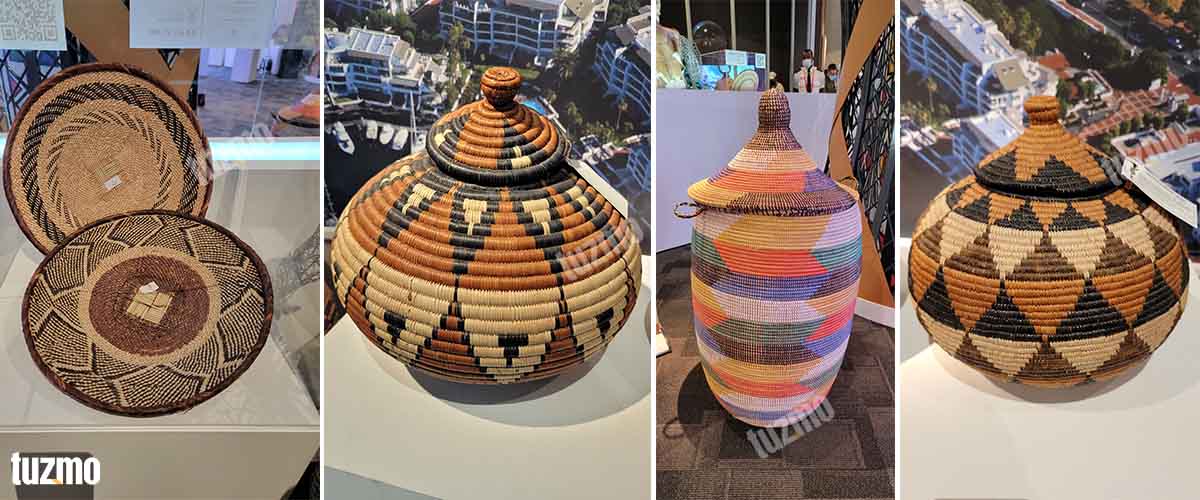
South Africa is the twenty-third most populated country globally and is located on the southernmost tip of Africa. It is home to over sixty million people and contains three capital cities, with the largest and most famous being Johannesburg. The country boasts more than two dozen ethnic groups and tribes, speaking 11 official languages. Not only are there indigenous African tribes but also descendants of European colonists and Asian settlers.
With all the different languages, ethnic groups, and culture flowing throughout South Africa, there is an abundance of arts and crafts. Let’s take a further look at what the artisans of South Africa have to offer.
Basket weaving is a form of traditional arts and crafts of South Africa. These baskets have been used for centuries for both practical and ceremonial services. Made initially using natural items like grass and bark, South Africans used their baskets to collect grain, vegetables, and liquids. It is common to use a coiling technique, using bundles of sedge grass bound together and sewn to create baskets of varying sizes. Initially, men crafted the baskets, and later, the women took over the job. The men created simpler facades while the women used the influences of nature to create more colorful patterns. This change is seen in the artwork used to embellish the baskets.
Beading was once used to distinguish tribal royalty from common tribesmen and is seen across many South African societies, including the Xhosa, Sotho, Venda, Zulu, and Ndebele. Each group uses beads to signify different things within their culture, with each color and pattern representing something specific. The Zulu people are famous for their stunning jewelry and the Ndebele use beads to handcraft dolls.The Ndebele doll shown here is an initiation doll dressed as a married woman of their tribe, with a beaded apron, brass rings around her neck, and a beaded marriage blanket (Nguba). The pattern and design of the apron signifies that she is a mother.
South African artisans are known the world over for their beaded jewelry, especially their necklaces, earrings, and bracelets. The artisans get more space to display their skills on beaded bags, which are very popular souvenirs. Rarer to find and a sign of the mastery of an artisan are fully beaded animal and human sculptures like the Barbary Stag depicted below. The artisans of South Africa use beads made of shells, glass, animal bones, and plastic for their crafts.
Pottery began as a functional necessity for South African people, allowing them to use the items to carry food and water and use the pieces for storage. As time progressed, cultural influences made their way onto many pottery items, with their imagery and designs influenced by each group’s unique beliefs and location. For instance, the Zulu applied aloe leaves to the exterior of their pottery before firing to help protect it against darkening in the kiln and then applied fat to create a shiny finish.
Many different shapes and sizes were created using a coiling method similar to basket weaving. Long rolls of clay were coiled together, and the surfaces flattened to allow for decorating and painting. Artisans either use the white clay found abundantly along the shores of Cape Town or terracotta clay. Each piece of pottery shows the skill the artisans of South Africa possess, creating arts and crafts that are both functional and beautiful.
The artisans of South Africa are very skilled at fashioning utensils, animal sculptures, religious figurines, and depictions of daily life from wood. The wood crafts can be intricately detailed or minimalist pieces. The artisans either leave the natural wood finish or paint them to resemble their realistic inspirations.
South Africa has a rich history and many different cultures and ethnic groups. There are so many exciting and striking works of art to discover, each one special and unique in its own way. Discover the story behind each craft and distinguish the works of different artisans of South Africa for heirloom-quality keepsakes.